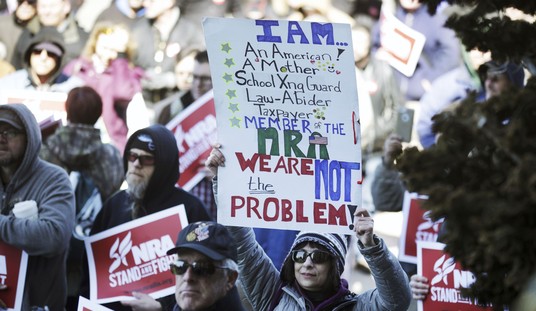The Supreme Court could get another chance to grant emergency relief to gun owners in the coming days, this time in a case challenging California’s ban on “large capacity” magazines. On Wednesday, California Rifle & Pistol Association president Chuck Michel said the group is weighing whether to seek an emergency appeal of the Ninth Circuit’s decision to keep California’s ban on “large capacity” magazines in place despite a lower court opinion that found the law violates the Second Amendment.
Meanwhile, the Court is slated to hold oral arguments in less than a month in the Rahimi case, and other 2A-related cases challenging the ATF’s ban on bump stocks and federal statutes barring non-violent criminals and “unlawful” users of drugs from possessing firearms will soon be considered in the Court’s weekly conference.
Given all of the attention that the Supreme Court could soon be paying to Second Amendent issues, I invited Second Amendment Foundation founder and executive vice president Alan Gottlieb to join me on today’s Bearing Arms Cam & Co to share his thoughts on how the Second Amendment is faring before the High Court.
When it comes to Rahimi, Gottlieb says he is concerned that the Court will disregard the test it laid out in Bruen because of the optics of the case. Few people would call Zachey Rahimi a fine, upstanding citizen, but the question before the Court isn’t whether or not Rahimi is deserving of that label. It’s about whether any individual, including Rahimi, can be barred from possessing a firearm because of a civil domestic violence restraining order. As Prof. William English and the SAF’s sister organization Citizens Committee for the Right to Keep and Bear Arms (where, in full disclosure, I serve as an unpaid and volunteer member of the board of directors) pointed out in a joint amicus brief, not only does § 922(g)(8) lack any appropriate historical analogues that point to its constitutionality, the “social science does not demonstrate that the law entails net gains for public safety.”
English notes that in approximately 89-to-95% of intimate partner homicides, no restraining order had been issued beforehand, despite the prevalence of those restraining orders nationwide. Each year somewhere between one and two million restraining orders are granted, and as English contends, the process of issuing those orders is ripe for abuse.
Although documenting its prevalence at scale is methodologically challenging, a number of studies using different methods have found evidence that unsubstantiated protective orders are sought and obtained at high rates. For example, Hines, Douglas, and Berger (2014) found that “threats to make false accusations are common in situations where women perpetrate violence against men. 73% of men who experienced femaleperpetrated violence reported that their partner threatened to make false accusations.” See Denise A. Hines, Emily M. Douglas, and Joshua L. Berger, A Self Report Measure of Legal and Administrative Aggression Within Intimate Relationships, AGGRESSIVE BEHAVIOR 41, no. 4 at 295-309 (2015); Denise Hines, Expert Addresses Common Misconceptions About Men Who Experience Intimate Partner Violence (Apr. 19, 2022).
Mazeh and Widrig note that “Shaffer and Bala (2003) examined the outcome of legal proceedings involving allegation of PV [Partner Violence]. Their findings were that 26% of the allegations were found to be either false or unsubstantiated.” Yoav Mazeh & Martin Widrig, The Rate of False Allegations of Partner Violence, JOURNAL OF FAMILY VIOLENCE 31, no. 8 at 1035-37 (2016). In a more in-depth study of subjects referred from family courts in San Francisco Bay Area counties, 50% of the domestic violence accusations against mothers and 25% against fathers were found to be unsubstantiated.
A national survey conducted by the professional survey firm YouGov found that 8% of respondents representing 20.4 million adults “report being falsely accused of domestic violence, child abuse, sexual assault, or other forms of abuse.” Moreover, 17% of respondents indicated that they have known someone falsely accused of domestic violence in particular.
The scale of such false or trivial accusations is striking because it effectively means that millions of innocent accused can potentially be denied Second Amendment rights, which are rights that research has consistently shown are vital for self-defense.
This presents a genuine dilemma for judges who must make rulings based on sparse evidence that can have drastic ramifications for those who have protective orders issued against them. A study of North Carolina District Court judges who rule on domestic violence protective orders found that 75% “worried that the complaint may be false and in turn place an undue burden on the defendant or that issuing the order poses a serious threat to the livelihood of the defendant.”
…
If the main consequence of domestic violence protection orders is that the accused must avoid contact with the accuser, a large number of “false positives” may be tolerable from a social cost benefit analysis. But when protective orders deprive the accused of fundamental Second Amendment rights and expropriate property without robust due process, a large number of false positives becomes a much graver concern.
English’s brief goes on to outline alternative ways to prevent domestic abusers from legally accessing a firearm while protecting the Second Amendment rights of lawful gun owners, starting with ensuring a conviction for domestic violence offenses.
I have no problem conceding that § 922(g)(8) was enacted with a laudable goal in mind; protecting domestic violence victims from continued abuse. But as the CCRKBA brief contends, “[t]he problem with § 922(g)(8) and laws like it is that their net effect is to deprive a large class of citizens, many who have been falsely accused, of their fundamental constitutional right to keep and bear arms without due process, jeopardizing their own safety.”
Moreover, the benefits to public safety are estimated to be small in the best case and perhaps nonexistent. Finally, while these laws may pursue a laudable public purpose of disarming genuinely dangerous aggressors, there are ways to effectively pursue this aim while protecting due process and Second Amendment rights.
The Rahimi case isn’t the only topic of my discussion with Gottlieb. We had a wide-ranging conversation touching on other 2A cases, the Court’s reluctance to step in and issue emergency TROs or injunctions against challenged gun laws, and more, so I encourage you to check out the entire interview with SAF’s Alan Gottlieb in the video window below.









Join the conversation as a VIP Member